Junior Accountant
100+ Junior Accountant Interview Questions and Answers
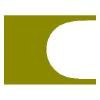
Asked in Carisma Solutions

Q. Accounting concepts and principles
Accounting concepts and principles are the foundation of accounting practices.
Accounting concepts are the basic assumptions and guidelines that govern the preparation of financial statements.
Accounting principles are the rules and guidelines that companies must follow when reporting financial data.
Examples of accounting concepts include the going concern concept, the accruals concept, and the consistency concept.
Examples of accounting principles include the matching principle...read more

Asked in Accenture

Q. What is a cash flow statement?
A cash flow statement is a financial statement that shows the inflows and outflows of cash in a business over a specific period of time.
It provides information about the cash generated from operating activities, investing activities, and financing activities.
Operating activities include cash received from sales, payment to suppliers, and payment to employees.
Investing activities include cash used for purchasing or selling assets like property, plant, and equipment.
Financing a...read more

Asked in Accenture

Q. What is accountant types of accountant
There are several types of accountants, including public accountants, management accountants, government accountants, and internal auditors.
Public accountants work for accounting firms and provide services to clients such as tax preparation and financial statement audits.
Management accountants work for companies and provide financial analysis and advice to help with decision-making.
Government accountants work for federal, state, or local government agencies and ensure complia...read more
Asked in Splisys IT Consulting

Q. How do you build confidence and overcome the fear of people?
Building confidence and overcoming fear of people requires practice, positive self-talk, and seeking support.
Practice speaking in front of a mirror or with a friend
Challenge negative self-talk and replace with positive affirmations
Join a public speaking or social group to gain experience and support
Focus on the message you want to convey rather than your fear
Remember that everyone feels nervous at times and it's okay to make mistakes
Asked in Amara Surendra and Associates

Q. What is input tax credit in goods and services tax?
Input tax credit is a mechanism to avoid cascading effect of taxes in GST system.
Input tax credit allows businesses to claim credit for taxes paid on inputs used in the production of goods or services.
It helps in avoiding double taxation and reduces the overall tax burden on businesses.
For example, if a manufacturer pays GST on raw materials used in production, they can claim input tax credit on the GST paid when they file their GST returns.
Input tax credit is available only ...read more

Asked in Genpact

Q. What is a bank reconciliation statement?
A bank reconciliation statement is a document that compares the bank statement with the company's cash records to identify any discrepancies.
It is used to ensure that the company's records match the bank's records.
It lists all the transactions that have not yet been recorded by the bank or the company.
It helps in identifying errors, such as missing deposits or unauthorized withdrawals.
It includes adjustments for items like bank charges, interest, and errors.
The final goal is ...read more
Junior Accountant Jobs
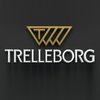

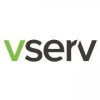
Asked in Rysun Jewels

Q. How would you record journal entries for cash received from Naveen and rent paid through bank?
Journal entries for cash received and rent paid through bank transactions.
Cash received from Naveen is recorded as a debit to Cash and a credit to Accounts Receivable.
Example: If Naveen pays $1,000, the entry is: Debit Cash $1,000, Credit Accounts Receivable $1,000.
Rent paid through bank is recorded as a debit to Rent Expense and a credit to Bank.
Example: If rent is $500, the entry is: Debit Rent Expense $500, Credit Bank $500.

Asked in Vishvaraj Environment

Q. Tell me about your field of study.
I have a Bachelor's degree in Accounting and Finance.
I have a strong understanding of financial principles and practices.
I am proficient in using accounting software and tools.
I have experience in preparing financial statements and reports.
I am knowledgeable in tax regulations and compliance.
I have excellent analytical and problem-solving skills.
I am detail-oriented and have strong organizational skills.
I have good communication and interpersonal skills.
I am a quick learner a...read more
Share interview questions and help millions of jobseekers 🌟


Asked in Federal Bank

Q. What is the interest rate for fixed deposits?
The interest rate for fixed deposit varies depending on the bank and the duration of the deposit.
Interest rates for fixed deposits are generally higher than savings account rates.
The longer the duration of the deposit, the higher the interest rate.
Different banks offer different interest rates for fixed deposits.
Interest rates for fixed deposits can range from 2% to 7% depending on the bank and duration.
Fixed deposits are a low-risk investment option for individuals.

Asked in NuvoRetail

Q. What is the TDS rate on commission, and under which section does it fall?
TDS on commission is deducted at a rate of 5% under Section 194H of the Income Tax Act in India.
TDS rate on commission is 5% as per Section 194H of the Income Tax Act.
Applicable for payments made to agents or brokers for services rendered.
For example, if a commission of ₹10,000 is paid, TDS deducted will be ₹500.
TDS is to be deducted at the time of payment or credit, whichever is earlier.
The recipient can claim credit for the TDS deducted while filing their income tax return.

Asked in NuvoRetail

Q. Which software are you familiar with?
I am familiar with various accounting software, including QuickBooks, Xero, and Microsoft Excel, which enhance financial management.
QuickBooks: Used for bookkeeping, invoicing, and payroll management.
Xero: Cloud-based software for real-time financial tracking and reporting.
Microsoft Excel: Essential for data analysis, budgeting, and financial modeling.
Sage: Familiar with Sage for managing accounts and generating financial reports.
Asked in Econ Antri

Q. How do you manage an overload of work with limited time?
Prioritize tasks, delegate if possible, and communicate with team members.
Create a to-do list and prioritize tasks based on urgency and importance.
Delegate tasks to team members if possible and communicate clearly about expectations.
Take breaks and avoid multitasking to maintain focus and productivity.
Ask for help or additional resources if necessary.
Review and adjust workload regularly to ensure deadlines are met.
Example: If a deadline is approaching, prioritize that task an...read more

Asked in First American Title

Q. What is balance sheet? What's is real account meaning and example ?
Balance sheet is a financial statement that shows a company's assets, liabilities, and equity at a specific point in time.
Balance sheet is a snapshot of a company's financial position at a specific point in time
It shows the company's assets, liabilities, and equity
Assets are what the company owns, liabilities are what the company owes, and equity is the difference between the two
The balance sheet follows the accounting equation: Assets = Liabilities + Equity
Example: A company...read more
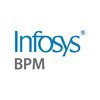
Asked in Infosys BPM

Q. What is P2P process? What is ERS?
P2P process is the procurement-to-payment process that involves all activities from purchasing to payment of goods and services.
P2P process includes requisitioning, purchasing, receiving, invoicing, and payment
It ensures that goods and services are procured at the best price and delivered on time
ERS (Evaluated Receipt Settlement) is a P2P process where payment is made based on the receipt of goods or services
ERS eliminates the need for a separate invoice and reduces the time ...read more
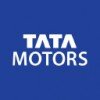
Asked in Tata Motors

Q. Are you familiar with Tally ERP 9?
Yes, I have learned Tally ERP9.
I have completed a Tally ERP9 course from XYZ institute.
I have hands-on experience in using Tally ERP9 for maintaining accounts.
I am proficient in creating invoices, managing inventory, and generating financial reports using Tally ERP9.

Asked in UltraTech Cement

Q. What do you know about accounting?
Accounting is the process of recording, classifying, and summarizing financial transactions to provide information that is useful in making business decisions.
Accounting involves recording financial transactions
It includes classifying transactions into categories such as assets, liabilities, and equity
Summarizing financial information to create financial statements
Provides information for decision making and financial analysis
Examples include balance sheets, income statements...read more
Asked in Mittal Sales Corporation

Q. Why equity is liability to a company? Capital market money market? Journal entries
Equity is not a liability to a company, it represents ownership in the company.
Equity represents the residual interest in the assets of a company after deducting liabilities.
It is the ownership interest of shareholders in a company.
Equity is shown on the balance sheet as a separate section from liabilities.
Unlike liabilities, equity does not have an obligation to be repaid.
Equity can increase through the issuance of new shares or retained earnings.
Examples of equity accounts ...read more
Asked in Acutesoftsolutions

Q. Tell about accounts,what is accounts
Accounts refer to the financial records of an organization, including transactions, assets, liabilities, and equity.
Accounts are used to track and record financial activities of a business or individual.
They include various types such as assets, liabilities, equity, revenue, and expenses.
Accounts are organized in a chart of accounts, which provides a systematic structure for recording and reporting financial information.
Examples of accounts include cash, accounts receivable, ...read more

Asked in Annapurna Finance

Q. What is a cash book?
Cash book is a financial record that tracks all cash transactions of a business.
It records all cash receipts and payments
It helps in maintaining cash balance
It is a subsidiary book of accounts
It is used to prepare the cash flow statement
Example: Petty cash book, Bank cash book

Asked in Gini & Jony

Q. What is the difference between capital growth and fundamental growth?
Capital growth is the increase in the value of an asset, while fundamental growth is the increase in a company's earnings and revenue.
Capital growth is related to the value of an asset, while fundamental growth is related to a company's financial performance.
Capital growth can be influenced by market conditions and investor sentiment, while fundamental growth is influenced by a company's management and operations.
Examples of assets that can experience capital growth include s...read more
Asked in Econ Antri

Q. How many types of accounts are there, and can you explain them?
There are 5 types of accounts: Assets, Liabilities, Equity, Revenue, and Expenses.
Assets: resources owned by the company (e.g. cash, inventory, property)
Liabilities: debts owed by the company (e.g. loans, accounts payable)
Equity: the residual interest in the assets of the company after liabilities are deducted (e.g. common stock, retained earnings)
Revenue: income earned by the company (e.g. sales revenue, service revenue)
Expenses: costs incurred by the company (e.g. salaries,...read more
Asked in SPR & CO

Q. What are the types of taxes
There are several types of taxes, including income tax, sales tax, property tax, and corporate tax.
Income tax is a tax on an individual's earnings or income.
Sales tax is a tax on the sale of goods and services.
Property tax is a tax on the value of real estate or personal property.
Corporate tax is a tax on the profits of corporations.
Other types of taxes include excise tax, estate tax, and payroll tax.
Asked in Accounts Club Management

Q. What do you know about Accounting and Taxation?
Accounting involves recording, analyzing, and reporting financial transactions, while taxation deals with the laws and regulations related to taxes.
Accounting involves recording financial transactions, analyzing financial data, and preparing financial statements.
Taxation involves understanding and applying tax laws and regulations to ensure compliance and minimize tax liabilities.
Accounting and taxation are closely related as accurate financial records are essential for prope...read more

Asked in Venus Remedies

Q. what is VAT rates and what sales are charged CAT
VAT rates are the percentage of tax added to the price of goods and services. CAT is charged on certain luxury items.
VAT rates vary by country and can range from 0% to over 20%
In the UK, the standard VAT rate is 20%, but some items like food and children's clothing have a reduced rate of 5%
CAT, or luxury goods tax, is an additional tax charged on items like jewelry, yachts, and expensive cars
CAT rates also vary by country and can be as high as 100% in some cases
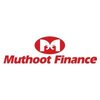
Asked in Muthoot Finance

Q. How to handle tha staff Very careful and honour
Staff should be handled with care and respect to maintain a positive work environment.
Communicate clearly and effectively with staff members
Provide constructive feedback and recognize their achievements
Create a supportive work culture that encourages growth and development
Lead by example and maintain a positive attitude
Address any issues or conflicts promptly and professionally

Asked in Tanishq

Q. Do you know tally and taxation
Yes, I have knowledge of Tally and taxation.
I have experience in using Tally software for accounting purposes.
I am familiar with various taxation laws and regulations.
I have prepared and filed tax returns for clients in my previous job.
I keep myself updated with the latest changes in taxation policies.
I am comfortable working with GST, VAT, and income tax.

Asked in NuvoRetail

Q. Have you used the VLOOKUP formula in Excel?
Yes, I have used the VLOOKUP formula in Excel to efficiently search for data in large datasets.
VLOOKUP stands for 'Vertical Lookup' and is used to search for a value in the first column of a table.
Example: =VLOOKUP(A2, B2:D10, 2, FALSE) looks for the value in A2 within the range B2:D10 and returns the corresponding value from the second column.
It is particularly useful for matching data from different sheets or tables.
The formula has four arguments: lookup_value, table_array,...read more

Asked in Gini & Jony

Q. What is the current market value
The current market value of what? Please specify.
The question is incomplete and lacks context.
Market value can refer to the value of a company's stock, a specific asset, or a commodity.
To answer the question accurately, more information is needed.
Market values can fluctuate frequently and are influenced by various factors such as supply and demand, economic conditions, and industry trends.

Asked in Accenture

Q. What is your experience with MS Office Word and Excel?
MS Office Word and Excel are software applications used for word processing and spreadsheet management respectively.
MS Office Word is used for creating and editing documents such as letters, reports, and resumes.
MS Office Excel is used for managing and analyzing data in spreadsheets.
Both applications are commonly used in business and academic settings.
They offer a wide range of features and tools to enhance productivity and efficiency.
Examples of features include formatting o...read more

Asked in Infosys

Q. Expansion for SAP and ERP
SAP and ERP are enterprise software solutions used for managing business operations and resources.
SAP stands for Systems, Applications, and Products in Data Processing.
ERP stands for Enterprise Resource Planning.
Both SAP and ERP help in streamlining business processes, improving efficiency, and reducing costs.
They provide a centralized database for managing various functions like finance, HR, inventory, and supply chain.
SAP and ERP can be customized to meet the specific needs...read more
Interview Experiences of Popular Companies






Calculate your in-hand salary
Confused about how your in-hand salary is calculated? Enter your annual salary (CTC) and get your in-hand salary


Reviews
Interviews
Salaries
Users










